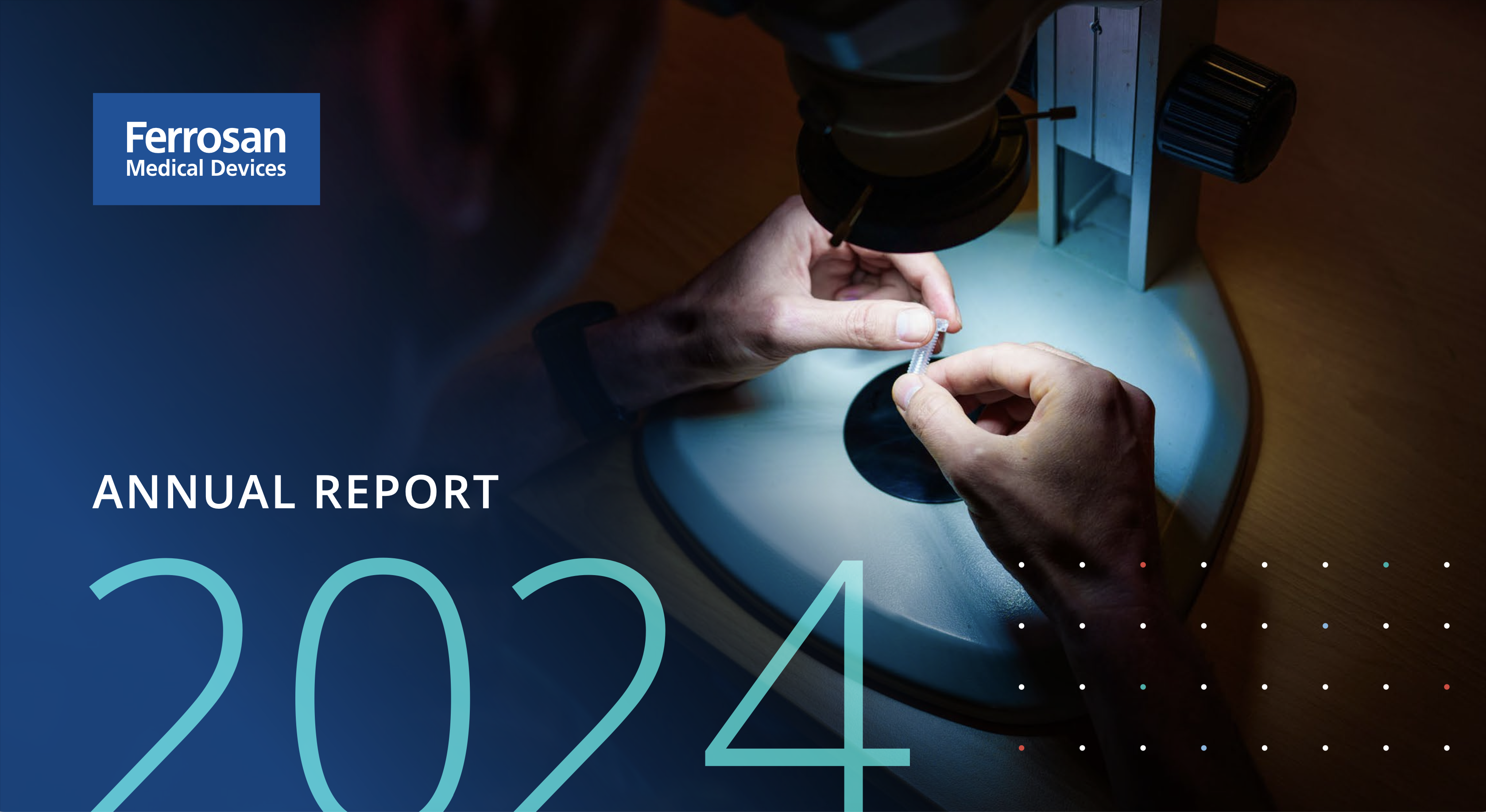
What we do
Ferrosan Medical Devices provides full circle competences from identifying and investigating the user need, to developing concepts and products based on clinical insights, to finally registering and manufacturing the product.
A one-stop-shop medical device company
Ferrosan Medical Devices provides a range of innovative medical devices for healthcare professionals.
Our focus is on haemostasis during surgery, regional anesthesia, and biopsy procedures.
We have strong capabilities within clinical insights, research and development, quality management and manufacturing.
As an innovation and manufacturing house, we provide full circle competences from identification and investigation of the initial user need, to concept and product development based on clinical insights, and finally to product registration, manufacturing, sterilization, and delivery to the market.

Surgical haemostatic devices
Our range of topical adjunctive haemostatic products are developed in close collaboration with surgical teams worldwide.
The gelatin-based adjunctive haemostats are designed to be used by clinical professionals in the operating room to control intraoperative bleedings. Our adjunctive haemostatic products consist of a flowable gelatin matrix as well as gelatin-based sponges and powder. All our products are CE marked and FDA approved, and their quality is framed by GMP regulations.
We have laboratories for quality control located on site to support the business and ensure that our products live up to our high standards.

Manufacturing facilities
Our manufacturing plant is located at our headquarters in Soeborg, Copenhagen and Szczecin, Poland. At our headquarters we have all business functions under the same roof, including research & development, manufacturing, supply chain, and quality management.
The close proximity of all functions allows for a dynamic work environment where there is a short distance from idea to implementation.

Product development
The environment in the operating room can be hectic. Patient safety is always the first priority. It is critical that the medical devices that we develop are both safe and effective. Consequently, human factors engineering is important to ensure that the product can be operated correctly and safely in a stressful environment.
Our products must be designed so that they can be prepared in a simple and fast way by the operating room nurses. This is to ensure that the surgeon can apply the haemostat – or any other medical device – with minimal delay to deliver the best possible patient outcomes.
Understanding the needs of surgeons and operating room nurses is essential to be able to develop medical devices that are effective and easy to use and that enable improved patient outcomes. We are proud to say that understanding the clinicians and their needs is a strong competence within our research and development teams.
Our range of topical adjunctive haemostatic products are developed in close collaboration with surgical teams worldwide to aid haemostasis during surgery.

Surgical adjunctive haemostats for clinical professionals
What is haemostasis?

The process of preventing blood loss from a vessel or organ of the body is referred to as haemostasis. The term comes from the Ancient Greek roots “heme” meaning blood, and “stasis” meaning halting. Put together, the word means the “halting of the blood“.
Haemostasis is a process to prevent and stop bleeding, that is, to keep blood within a damaged blood vessel. This is the first stage of wound healing.
This stage involves coagulation, blood changing from a liquid to a gel. Intact blood vessels are central to moderating the tendency of blood to form clots.
The endothelial cells of intact vessels prevent blood clotting with a heparin-like molecule and thrombomodulin and prevent platelet aggregation with nitric oxide and prostacyclin. When endothelial injury occurs, the endothelial cells stop secretion of coagulation and aggregation inhibitors and instead secrete von Willebrand factor, which initiates the maintenance of haemostasis after injury.
SPONGOSTAN™ Sponge mode of action

The gelatin matrix of the SPONGOSTAN™ sponge facilitates and accelerates the haemostatic process. When a blood vessel is damaged, the collagen in the vessel walls is exposed. This collagen acts as a stimulant to the thrombocytes in the blood, causing them to alter their physical attributes.
When the sponge is placed in the bleeding site, the structure of SPONGOSTAN™ acts as a matrix in which the thrombocytes are caught and activated. Thereby, the coagulation cascade is facilitated and accelerated.
Haemostats and bleeding management

At Ferrosan Medical Devices we know that effective bleeding management during surgery is essential for the surgeon. Being able to quickly identify the source of bleeding and stop the hemorage is critical to enable the surgeon to visualize the surgical field and maintain control of the procedure.
For this reason, proper bleeding management is central to preserving the physiologic functions for the patient and achieve positive outcomes.
Our range of topical adjunctive haemostatic products are developed in close collaboration with surgical teams worldwide to aid haemostasis in a safe and fast way. The products are easy to use and help reduce preparation time.
Our gelatin sponges are an example of a great haemostatic device. Once applied to a bleeding area, the sponge quickly stops or reduces the amount of bleeding present. These products absorb blood, allow for coagulation to occur faster, and give off chemical responses that decrease the time needed for haemostasis to take place.


